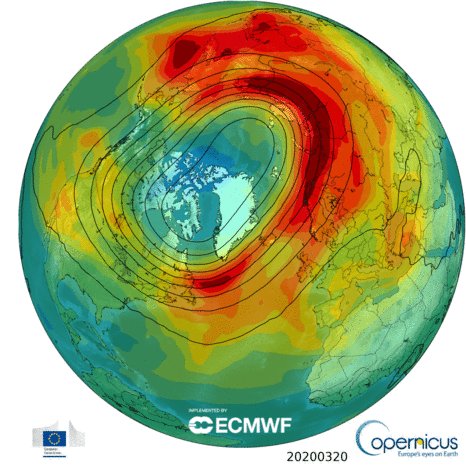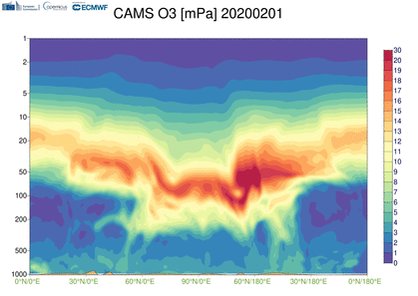
Just as suddenly as it first formed, a record-breaking ozone hole has healed, reports CBS News.
What is it?
The largest ozone hole to ever open up over the Arctic is now closed, after first opening up earlier this spring.
Not A COVID19 Lockdown Effect!
“Actually, COVID19 and the associated lockdowns probably had nothing to do with this,” CAMS tweeted Sunday.
“It’s been driven by an unusually strong and long-lived polar vortex, and isn’t related to air quality changes.”
Past Ozone Depletion
According to recent data from NASA, ozone levels above the Arctic reached a record low in March.
The “severe” ozone depletion was certainly unusual — 1997 and 2011 are the only other years on record when similar stratosphere depletions took place over the Arctic.
“While such low levels are rare, they are not unprecedented,” researchers said.
Human-made chemicals called chlorofluorocarbons have been destroying the layer for the past century, eventually causing the famous hole that formed in Antarctica in the 1980s. Experts pointed to “unusual atmospheric conditions” as the cause of the most recent hole, leading to industrial chemicals interacting with high-altitude clouds at abnormally low temperatures.
The Once in A Decade Event
An Ozone Hole Bigger Than Greenland?
Earlier this month, scientists from the European Space Agency said that the rare hole covered an area about three times the size of Greenland.
They expected it to heal as temperatures increased, breaking down the Arctic polar vortex and allowing ozone-depleted air to mix with ozone-rich air from lower latitudes.
Chemical Reduction Agreements Paved the Way
After signing the Montreal Protocol in 1987, 197 countries agreed to phase out chemicals like chlorofluorocarbons in order to protect the ozone from further damage, which has contributed to a decrease in the size of the hole over Antarctica. Without those regulations, the Arctic ozone hole this year could have posed a threat to human health.
“We don’t know what caused the wave dynamics to be weak this year,” Newman said.
“But we do know that if we hadn’t stopped putting chlorofluorocarbons into the atmosphere because of the Montreal Protocol, the Arctic depletion this year would have been much worse.”
Did you subscribe to our daily newsletter?
It’s Free! Click here to Subscribe!
Source: CBS News


























